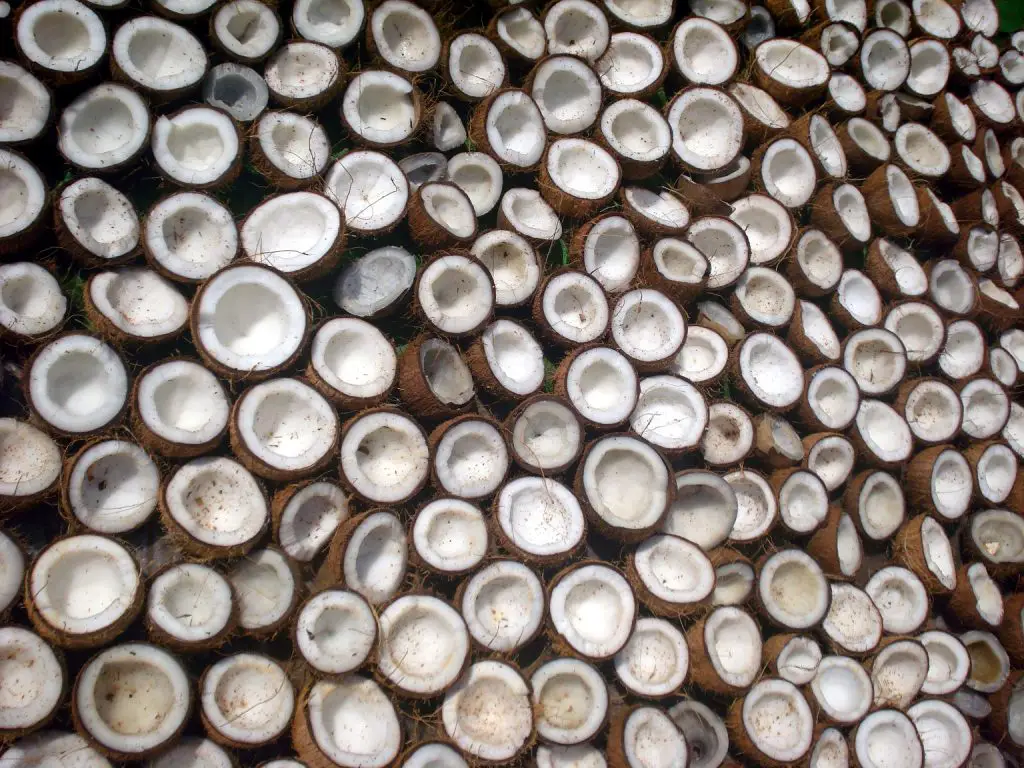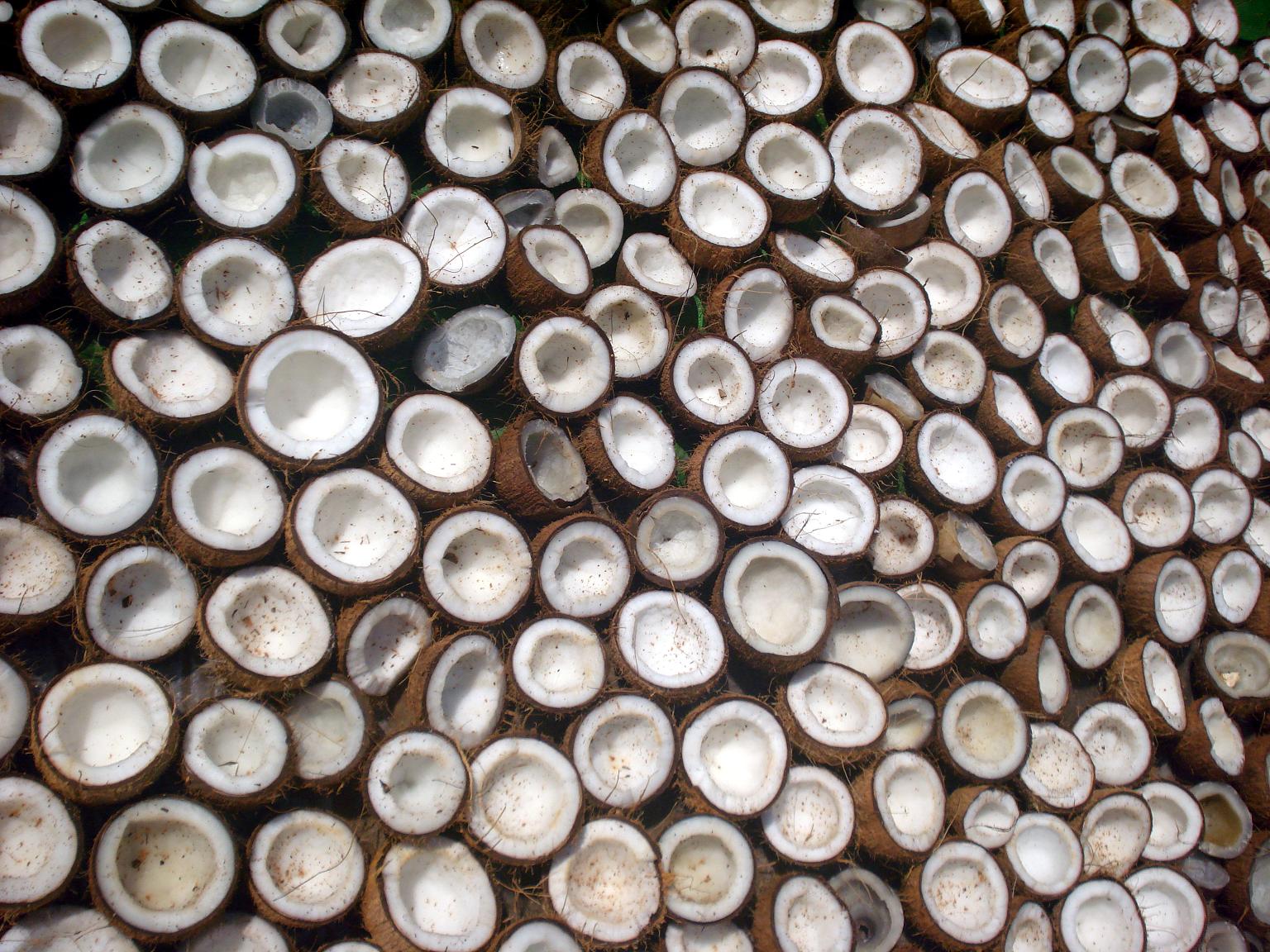Last Updated on February 21, 2022 by Allison Price
The oil industry has many by-products that are used in animal feeds. They are often useful additions to a healthy diet. Coconut oil is made from the white flesh of the coconut, not the husk or the hull. Copra is a byproduct. Copra can often turn brownish due to processing and is not as bright as store-bought coconut.

Copra is now readily available to animal feed makers due to the increase in coconut oil consumption. Horse feeds rarely contain copra. It is usually used as a supplement or in areas where coconut oil is readily available. In the United States, copra-based feeds have recently been introduced to the horse-feed market. Some are just pelleted copra without any fortification, while others are concentrated well-balanced concentrates containing copra as a minor component.
Although copra has a high level of protein, it is not as good as soybean meal. Copra is a high-quality protein source that makes up for its lack in quantity. The fibrous portion of copra can hold up to 40% of the protein, reducing bioavailability. Copra is low in lysine which is essential for growth and support of the immune systems. Additional lysine and threonine should be considered if copra is to be used as a major component in the diet of young horses.
Horse owners who add coconut oil or copra meal to their horses’ diets are doing so to increase fat intake and thus boost the horse’s calorie density. Copra is good for horses and helps to develop shiny coats. The risk of rancidity is high with a fat content around 8%. However, copra’s short- and medium-chain saturated fat acids are less vulnerable than those found in polyunsaturated fats. Due to rancidity concerns, copra should not be fed after long storage. Horses will refuse to eat any product that is not in their taste. Their sensitivity is high to rancid fat and they are almost certain to reject it.
Copra has attracted a lot of attention recently because of its low nonstructural carbohydrates (NSC) content. This makes it ideal for horses with diabetes or other metabolic problems, such as insulin resistance (IBS), or polysaccharide-storage myopathy (PSSM). Copra can be used with discretion to add calories but not affect the horse’s glycemic response. Although copra may seem like a low-glycemic feed option, there is a problem. Horses fed copra have a tendency to gain weight due to its high fat content.
The product has a low NSC and is rich in fiber. For a concentrate feedstuff, the fiber fractions for neutral detergent fiber (NDF), and acid detergent fibers (ADF), seem high. The nutritional composition shows that the fiber fractions are similar to those of temperate grasses. At approximately 25%, the percentage of digestible fiber (hemicellulose), is similar to fresh early vegetative pasture grasses. The energy content of copra’s fiber fraction is comparable to that of grass, but the product will be more calorie-dense due to its higher fat content. Copra is estimated to have the same digestible energy as soy hulls or beet pulp.
For horses with metabolic problems or horses not engaged in demanding jobs, a fat and fibre diet is a good choice. However, horses who are performing well may require more NSC to ensure they have enough energy. This problem can be solved by adding starch to the diet, such as sweet feeds or straight cereal grains to increase energy levels. Many of these problems can be balanced in a concentrate that contains only part copra.
Copra is a powder so it is hard to get horses to eat large quantities of it. The copra can be increased by pelleting it. The powder can be added to a diet or mixed with sweet food like beet pulp mash.
Impaction colic and other symptoms have been linked to copra. However, this is mostly due to copra consumption without sufficient water. It is important to soak the copra before it is served as a meal. Although palatability is good in general, it is much more enjoyable to eat when the food is wet.
You might encounter some issues if you purchase a product with copra meal as its base. This is dependent on the fortification that was added to it. Two concerns should be noted if the feed is not fortified.
Copra is high in phosphorus, low in calcium and can pose a problem when given in large quantities. The calcium-to-phosphorus ratio can be as low as 0.25:1, and the nutritionists at Kentucky Equine Research normally recommend a 1:1 to 5:1 ratio for adult horses. The imbalance can be corrected if you feed your horse grass hay with at least 0.45% calcium, or high-quality alfalfa feed at 1.5% of his body weight. The calcium-to-phosphorus ratio is an especially important aspect in the diets of growing horses.
A second possibility is that the feed has a zinc-to copper ratio imbalance, which hay can’t correct. Some copra meal may be high in copper, but low in zinc. The ideal ratio of zinc to copper should be between 3:5 and 5:1, but some copra may have as low as 2:2. Like the calcium-to-phosphorus ratio, the appropriate zinc-to-copper ratio is vital for proper development of young horses. This mineral imbalance can be corrected by taking a vitamin or mineral supplement, particularly one that is high in zinc.
If you are considering feeding your horse a copra-based feed, a Equine Nutritionist will double-check the vitamin intakes to make sure that your horse is getting enough of the nutrients. Fortification of vitamins, minerals is essential for good health and well-being.



